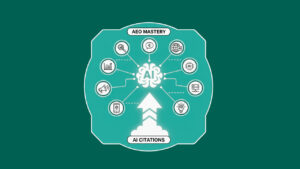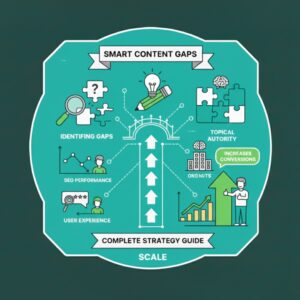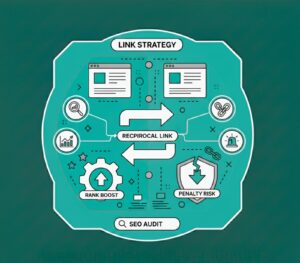Proven SEO Strategies 2025: Actionable Steps to Improve Rankings
Blogs | SEO
Written By: Lauren Davison
Introduction
Why do some websites top Google while others disappear? Search engine success is not random. Algorithms change. Competition is tough. You need the right approach.
This guide explores SEO strategies 2025, giving steps you can use right away. These tips go beyond the basics, which include how to make your site faster and create relevant content. You will learn how to make pages more visible, gain the right visitors, and keep them engaged.
Launching a new site or improving an old one? These strategies give you an edge in a fast-moving digital world. Start today. Watch your rankings grow.
Table of Contents
Keyword Research and Intent
Keyword research tells you what people really type into search engines. Some searches are quick questions. Others are ready-to-buy phrases.
Hit the right ones, and your content reaches the right audience. Look for long-tail terms. They might have lower traffic, but the visitors care more. Understand what they want. Match it. Solve a problem. That is how pages rise in rankings.
Tools for Keyword Research
Start with tools like Ahrefs, Google Keyword Planner, SEMrush, or Ubersuggest. See what words people use. Spot trends. Notice competition.
Pick terms that suit your content, not just the popular ones. Map keywords to the right pages. Track results. Keyword research is not done once. It grows, shifts, and evolves. Keep adjusting. Watch what sticks.
Understanding Search Intent
Search intent is what people actually want when they type a query. Sometimes they want informational answers. Sometimes they want site navigation. Sometimes they want to buy.
If your keyword hits the wrong intent, engagement and rankings drop. Look at the top results for your keywords.
Are they guides, product pages, or lists? Figure out what works. Make your content fit. Answer questions clearly. Solve problems. Search intent is not fixed. The queries change, and trends shift. Check often and keep your content aligned. That is how you stay visible and useful.
On-Page Optimisation
On-page SEO is about making each page easy to read and understand. Titles, headers, and images all send signals to search engines. Fix them, and your site becomes clearer.
Title Tags and Meta Descriptions
Title tags and meta descriptions are your first handshake with searchers. In SEO strategies 2025, strong titles matter. Keep them short. Add keywords naturally. Make each one unique.
Meta descriptions should explain the page in simple words, under 160 characters. Show people what is inside. Invite them to click. Update them often because search trends change and algorithms shift. Fresh and clear tags keep your pages relevant and visible.
Header Tags and Content Structure
Header tags like H1, H2, and H3 keep your content organised. H1 is your main title. H2s break content into sections. H3s divide those sections further. Search engines notice this structure. Keywords in headers are also helpful, but do not overuse them.
Clear headers make reading easier. People scan pages. They skip long walls of text. Short paragraphs, bullet points, and logical headings guide them. Think like a visitor. Lead them through your content naturally.
Use these SEO tips to create pages that are easy to follow, useful, and more likely to rank.
Content Quality and Updates
Old content can lose readers. Updating articles keeps them interesting. Change old facts, add new tips, or fix mistakes. Even small updates can help your site.
Some posts need tiny changes. Others might need a bigger refresh. Think of it like cleaning a room; it feels better after a tidy-up.
Creating Evergreen Content
Evergreen content stays useful for months or years. How-to guides, tips, and FAQs are good examples. Pick topics people always search for.
Keep sentences short. Break text into small sections. Add pictures if it helps explain things. A well-made evergreen post keeps bringing visitors for months or years.
Updating Old Posts
Old posts can lose their value over time. Refreshing it can make them useful again. Start by checking facts and numbers. Replace old statistics with the latest data. Add links to other helpful articles or trustworthy sources.
Look at how the post is structured. Break long paragraphs into smaller pieces. Use headings, lists, or images to make it easier to read. Adding a few extra tips can also make the content more helpful.
Updating posts regularly shows search engines that your site is active. It also makes readers trust your site more. This can improve your ranking and keep people coming back.
Mobile-Friendliness and Site Speed
People browse on phones more than ever. If a page takes too long to load, they leave. Fast loading keeps readers around. A mobile-friendly layout makes scrolling easy, taps smooth, and buttons simple to click.
Small fixes help a lot. Compress images. Remove heavy scripts. Use caching. Site speed is not just technical; it shapes how visitors feel about your site.
Responsive Design
Your website should fit every screen. Phones, tablets, even tiny screens; they need to adjust automatically. Google checks your mobile version first.
Slow pages ruin the experience. Even neat designs fail if they lag. Test often. Shrink images. Cut unnecessary code. Every tweak counts. Fast and responsive sites keep users happy and encourage them to return.
Improving Load Speed
Slow pages drive people away. Large images, extra code, and heavy scripts are usually the culprits. Shrink pictures without losing quality. Cache parts of your site so returning visitors load pages fast.
Look at your code, too. Remove anything unnecessary. Combine files where you can. Even small tweaks make a noticeable difference.
Site speed matters for more than visitors. Google checks it through Core Web Vitals. Quick pages keep people reading, clicking, and coming back. A fast site feels smooth, smart, and reliable.
Internal Linking
Internal links are an easy way to strengthen your site’s structure. They help search engines discover pages and improve how your content is organised.
Good internal linking also keeps visitors exploring. When readers click from one page to another, your site sees lower bounce rates and longer visits.
Linking Related Pages
Connect pages that naturally relate to each other. For example, a blog about SEO can link to posts on content updates or site speed. This guides readers to more useful information without leaving your site.
Internal links also share authority. Linking high-value pages to new or smaller ones helps them rank better in search results. Use clear anchor text so readers know what to expect. Keep the links relevant and helpful, not forced; this makes navigation smooth and boosts SEO at the same time.
Anchor Text Best Practices
Anchor text is what people click. It should tell them what they will get. Don’t use vague words like “click here.” They mean nothing. Say exactly what’s on the other page.
For example, “tips to speed up your website” tells readers and search engines clearly. Vary your words. Some links can have full keywords, some can be short, plain phrases. Don’t make them all the same. It looks odd and unnatural.
Only link when it adds value. If a link doesn’t help someone, leave it out. Good anchor text guides people, passes authority, and makes the site easier to use.
Backlink Building
Backlinks are still one of the strongest ranking signals. A single high-quality link can be worth more than dozens of weak ones.
Strong backlinks show search engines that your content can be trusted. They also bring direct traffic from other sites.
Guest Posting and Outreach
Backlinks are still one of the strongest signals for ranking. A single good link can be worth more than dozens of weak ones. They tell search engines your content can be trusted.
Backlinks also bring new visitors straight from other sites. Guest posts remain a solid tactic in SEO strategies 2025. Writing for respected blogs builds authority and earns valuable links.
Personal outreach works best; skip the copy-paste emails. Show why your content helps their audience. Strong links improve rankings, grow trust, and keep traffic flowing. Quality always wins over quantity.
Directory and Local Listings
Listing your business on trusted directories makes it easier to find. Google Business Profile, Yelp, and niche directories are good places to start.
Keep your details the same everywhere: name, address, phone. When the info matches, search engines trust you more. That trust can help your site appear higher in local searches.
These links may not be as strong as a guest post, but they still matter. They give authority, bring in real customers, and build a base for local SEO. Update them often so nothing looks out of date.
Local SEO Basics
Local SEO helps small businesses show up when people search nearby. Showing up in maps and local results can send real customers to your door.
It’s about making sure your business is easy to find online and offline. A strong local presence builds trust and drives more visits.
Google Business Profile Optimisation
Claiming your Google Business Profile is one of the easiest SEO tips in 2025. Fill in every detail like address, hours, website, and contact info. Add good photos so people know what to expect before they visit.
Encourage happy customers to leave reviews. Fresh reviews boost visibility and build trust. Post updates or events to keep your profile active.
Google rewards businesses that look alive and responsive. A well-optimised profile makes you stand out in local searches. It can push you ahead of competitors and bring more foot traffic straight to your business.
Local Keywords and Reviews
People often type “near me” or a city name when they search. Add these phrases in your titles, descriptions, and pages so your business shows up. Use them in a natural way, not crammed in.
Reviews matter just as much. Good reviews build trust and help your ranking. Ask happy customers to share their thoughts. Reply to reviews, even the bad ones. It shows you care and keeps your profile active.
Using local words with steady reviews makes your business more visible. It can turn casual searchers into real visitors.
Track and Measure Results
One of the best SEO tips is keeping an eye on progress. Tracking makes sure you know what works and what needs fixing.
Without measurement, you’re guessing. Analytics turns guesses into clear steps.
Google Analytics Setup
Google Analytics is a useful tool. It shows how people reach your site, which pages they visit, and how long they stay. You can also track conversions, like form signups or product sales.
In SEO strategies 2025, data is key. It is not enough to create content; you need proof that it’s driving results. Analytics highlights what brings traffic and what’s holding you back.
Set goals inside the tool so you can see progress over time. Use these insights to shape your next move for publishing new content, fixing weak pages, or improving site speed.
Search Console Insights
Search Console shows how Google views your site. It reveals which pages get clicks, what keywords people use, and if there are problems holding you back.
Broken links, crawl issues, or mobile gaps can hurt rankings. Search Console points them out so you can fix them fast. It is not the same as Analytics.
Instead of user behaviour, this tool highlights search visibility. Together, both give a clear view of growth. Checking Search Consoles often helps you spot trends early.
New keyword ideas appear, pages that drop in traffic stand out, and technical issues don’t pile up. Simple and steady use keeps your site healthier and easier to rank.
Conclusion
Ranking in 2025 is not about hacks. It is about steady effort and smart choices. Solid keyword research, clean on-page setup, and strong backlinks lay the groundwork for success. Mobile-friendly design and fast pages keep you ahead.
Data is the guide; track progress, and adjust when needed. Content is the driver; make it clear, useful, and fresh. Links are the trust signal; choose quality over numbers.
At Midland Marketing, we see SEO strategies 2025 as a long game. Focus on people first, then search engines. Do this, and your brand earns visibility that lasts, bringing results long after the work is done.
Frequently Asked Questions
1. Do keywords still help with rankings?
Yes, but only if they fit naturally. Do not force them into titles or paragraphs. Write clearly. Keep it simple. That matters more than anything.
2. How can I make my website easier to use?
Keep menus simple. Break text into small sections. Make pages load fast. When things are easy, visitors stay longer.
3. Can social media improve SEO?
Yes. But shares are not backlinks. However, they put your content in front of more people. More eyes can lead to natural links over time.
4. Should I focus on evergreen content or trending topics?
Both work. Evergreen posts bring steady traffic. Trending topics give a quick boost. Mixing them usually works best.
5. What’s a common SEO mistake to avoid?
Shortcuts. Buying cheap links, copying content, or ignoring updates will only hurt in the long run.

Written by - Lauren Davison
Introducing Lauren – one of our content writers who has a flair for SEO and creative strategy!
With a Master’s Degree in Creative Writing, Lauren has niched down into SEO and content writing.
Outside of work, she loves watching the darts, reading and the pub on the weekend.
Want some more?
Latest Insights & News

Revolutionising Marketing: The Rise of Situational Content Strategies
Situational content strategies involve tailoring content to specific moments, contexts, or audience behaviours. By aligning content with real-time trends, seasonal needs, and user intent, brands can increase relevance, improve engagement, and strengthen SEO performance.

Smart Ways to Identify and Fill Content Gaps Fast: A Complete Strategy Guide
Content gaps refer to missing information, unanswered questions, or underserved topics in your existing content. Identifying these gaps helps you create targeted, high-value pages that improve search visibility, satisfy user intent, and outperform competitors.

Reciprocal Links in SEO: Do They Still Boost Rankings or Risk Penalties?
For the keyword “reciprocal links SEO,” focus on explaining how reciprocal linking works today. Reciprocal links are not harmful by default, but Google can flag excessive or manipulative link exchanges. To stay safe, only exchange links when they are contextually relevant, natural, and valuable to users.
